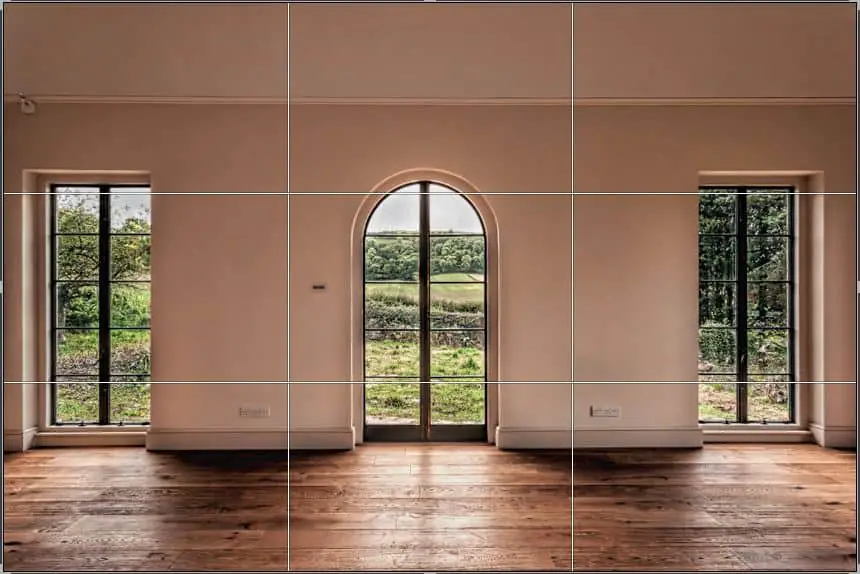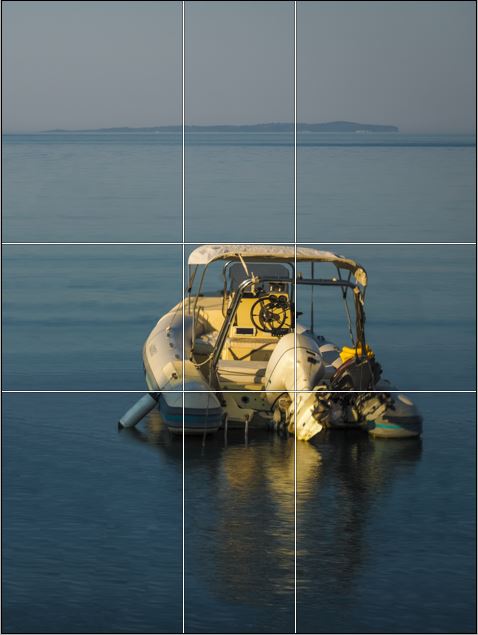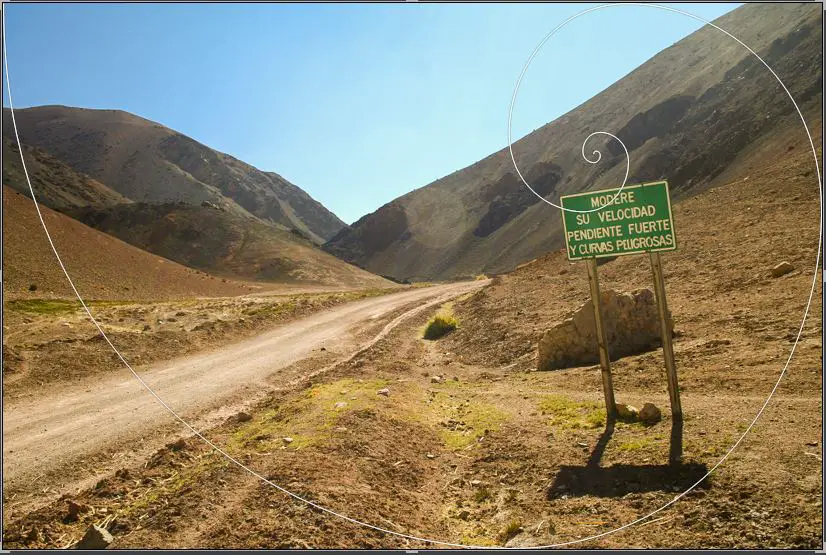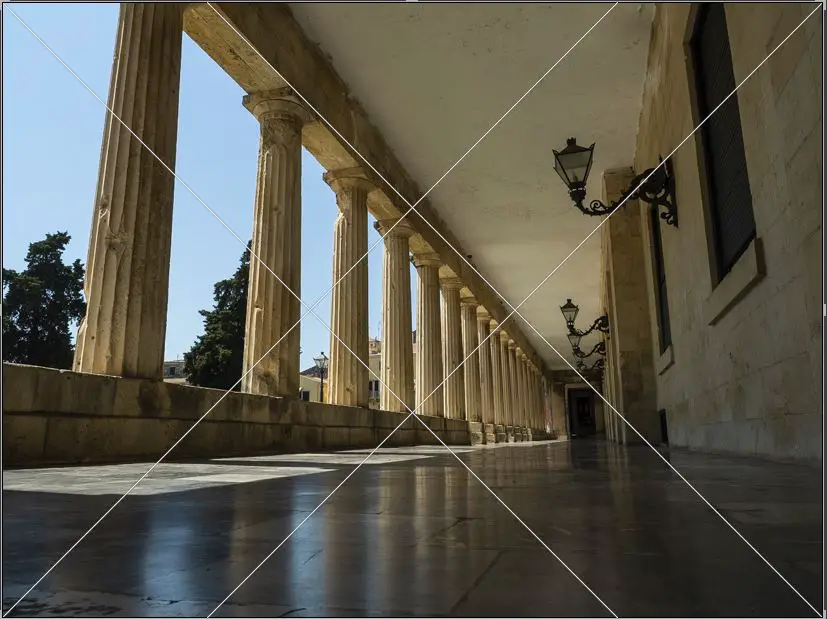I want to explore some of the important things that we need to consider before we take a photo. Proportion is one of those things, and how we use proportion when we take a photo will have a significant impact on the photo that we create.
Proportion in photography is important, and if used correctly can help us to create better-composed, and indeed more interesting photos. Get the proportions right in a photo and it looks natural, familiar and pleasing to the eye. Get the proportions wrong and a photo can be awkward, unfamiliar, uncomfortable even.
You can of course change the proportions within a photo for creative effect, and artistic license. But the proportions of things within a photo will influence how good a photo is, or is not, and will also influence the viewer’s eye and how they see the composition.
I also have to add that this can be subjective, as is the case for any of the visual arts, and subject to interpretation by the viewer of a photo. So the best way to represent proportion in a photo is down to what the creator of the photo intends and what the viewer of the photo sees. The principles of art dictate that the view of the composition of a photo is subjective.
Here are some thoughts and techniques that will help you to use proportion to help you create better, more interesting photos. In this post, I cover the following things.
- Composition
- The human eye
- Aspect ratios
- Rule of thirds
- Golden Ratio
- Golden Spiral
- Diagonal lines
- Creative use of proportion in photography
- Change the camera angle
- Changing the focal length used
- Telephoto lenses
- Wide angle lenses
- A word on crop factor
- The importance of proportion in architectural photography
- Proportion in other types of photography
- And the point of this?
- What do I do?
- What if I take photos with a phone and not a camera?
- Summary
- The Photography Explained Podcast
- Related reading
- My You Tube channel
- Get a weekly email from me
- How can I find out more about this stuff?
Composition
Better composition
Let’s start at the beginning. For me, the objective with every photo that I take is to get the best composition that I can. The better the composition the better the photo. It is that simple. If you take one thing away from this post it is that composition is king. Photography composition is so important – it determines after all what the viewer of a photo is looking at.
- Great composition = the chance of a great photo
- Rubbish composition = rubbish photo
Composition techniques
You normally start to compose a photo with conventional proportions. That is the convention, everything where it should be, everything in its natural place. But this might not work with the composition that you are trying to achieve with the main subject, so you might have to be creative, and come up with a different composition. I will give you some thoughts on this but we have to be careful to ensure that the composition retains, or consciously changes, the elements in a photo, depending on what you are trying to do. We need to think about the visual elements within a photo, and how they relate to each other. We need to capture the important elements of a photo in a logical, pleasing way.
The main subject is the focal point of a photo, and care needs to be used in its placement, and how it relates to the other elements of a scene. Photographic composition is an art all of its own, and something that we should work on with every photo that we take.
Composition is king.
The human eye
The human eye is used to seeing things a certain way, with familiar proportions. The human eye views the world in a similar way that a full-frame camera sees things with a 50mm focal length. That is the starting point, so any change from this focal length will change things within a photo. More on that in a bit.
Do you want to create a familiar image or one that has an alternative perspective and proportions? You can change a photo so it is not as you or I see the world with our eyes, making a photo potentially more interesting. And working with digital images and all the tech available these days makes is easier than it ever was to do.
These are some general things to think about, Let’s now look at some specific photography stuff.
To start with, we need to understand how to get the proportions in a photo correct.
Aspect Ratios
Most Common Aspect Ratios
The most common aspect ratio in photography is 3:2. This is the aspect ratio of a conventional, consumer camera. This originates back in the good old film days when a 35mm camera negative was 36mm x 24mm. This is the same size as the sensor on a full-frame camera.
An iPhone uses a 4:3 aspect ratio, similar but not the same. This is in landscape mode, with the long bit of a photo going from side to side. Flip to portrait mode and things change. The long side of a photo is not vertical. This helps when photographing people, hence the terms landscape and portrait orientations.
Try a square format image and things change immediately. I love doing this now and then.
Photograph a person in portrait mode and things look more natural, the proportions of a person are more flattering than if you photograph someone in landscape orientation.
You can play around with this and see what happens, see how you can change the proportions in a photo. And you can do this in Lightroom, where you can start with the original aspect ratio, and then select a different aspect ratio using the crop overlays. You can find all of this good stuff in the cropping tool. But in very broad terms, some photos render proportion more realistically and naturally in portrait orientation and others in landscape orientation, depending on the subject matter.
Rule Of Thirds
The rule of thirds divides a photo into 9 rectangles of equal size using 2 vertical and 2 horizontal grid lines. This is what it looks like in Lightroom. This is a good example of the rule of thirds.

The rule of thirds is one of the crop overlays in lightroom.
The rule of thirds is used to organise a photo and is particularly useful when photographing buildings. Use the rule of thirds and you can accurately reproduce the scale and proportion of a building, This also works of course other subject matter.
And where the lines intersect is where you put things of particular interest as this is where the eye is naturally drawn to.
Golden ratio
This is the Lightroom interpretation of the Golden ratio. I have applied it to a photo of a boat, it sort of works.

Now if you look into this, you will find many different interpretations of what the Golden Ratio is. I use the Lightroom version which I have shown you. And it sort of works in this photo, but no I did not take the photo with this rule in mind.
Getting back to proportions though, the golden ratio can be used to aid composition.
Golden spiral
The golden spiral is also known as the Fibonacci Spiral, the Fibonacci sequence, or the golden ratio. I know, it can get confusing. This is what Lightroom gives you using the crop overlay tool.

It is a mathematical equation that, erm no, there is no point going on as I didn’t get this bit – as I like to say this is irrelevant detail!
But I can tell you this, the golden spiral helps us to create more balanced and pleasing photos. You start by placing the subject matter at the end of the spiral and arrange things according to the lines in this example above.
This is ideal for landscape photography, where you can place one thing at the end of the spiral and arrange the rest of the landscape around it.
Diagonal lines
These can be used in architectural photography to take the viewer’s eye into a photo. Using these guides you can place a diagonal line pleasingly in a composition.
Here is an example where I have applied a Lightroom Diagonal crop overlay to a photo of a stunning building in Corfu, St Michael and St George Palace, now called the Museum of Asian Art.

I have not gone into great detail on these things, I just wanted to make you aware of them and show you what they are, and how they can influence composition and proportion. These are things for a post all about photography composition.
Creative use of proportion in photography
Change the camera angle
Changing the camera angle is a great way to change the proportions within a composition. Change where the camera is, and the angle of the camera to the main subject matter and you can massively change a composition. You can also massively change the proportions within a photo. There is a danger with digital cameras of just taking hundreds of different photos – I am not saying that. I am saying change where you take the photos from. Sure take the starting viewpoint, but don’t take a photo at every possible position, take the one with the best composition. Look for a dramatic effect, a dramatic change from the original image capture.
This is one of the main ways that we photographers creatively change compositions to create better, more interesting photos.
These are the ways that you can change the camera angle
- changing the angles from which you take photos – move left or right
- changing the angles from which you take photos – move up or down
- changing the angles from which you take photos – move forwards or back
This is what I do before I take a photo. I move around. I look at the scene, study what I am photographing, and work out how the various elements relate to each other. I want the proportions to be right, to be pleasing to the eye. I want them to accurately record the scene. Well, I am photographing buildings most of the time so the proportions for me need to be correct.
But by simply moving around, to the left and the right, up and down, we can change the composition.
And by moving forwards we can massively change the proportions of the elements within a photo, giving emphasis to what is in the foreground. Moving back and what was a prominent feature can get lost amongst the rest of a scene, but this might work.
This all depends on what you are photographing, and what you want to get out of a photo.
Changing the focal length used
I mentioned earlier, the human eye sees the world in a similar way to a full-frame camera with a 50mm lens attached. A 50mm lens is called a standard lens for this reason. But there are other focal lengths available to use, which fall into two broad categories
- Telephoto lenses
- Wide angle lenses
A telephoto lens has a focal length larger than 50mm. The larger the number, the narrower the field of view and the closer and indeed larger the subject matter is.
A wide-angle lens has a focal length which is less than 50mm. The smaller the number, the wider the field of view, and the further away, and smaller the subject matter is in a photo.
Changing the focal length of a lens is the other way of changing the proportions of things in a photo, the other being changing the camera angle.
Telephoto lenses
Telephoto lenses reduce the field of view meaning you get less in a photo. Telephoto lenses compress things, make things look closer together and reduce the depth of field (for the same aperture). The longer the focal length the greater the effect.
Telephoto lenses change our perception of the world that we see, making for more interesting photos.
Wide angle lenses
Wide-angle lenses do the opposite of telephoto lenses, allowing you to get more into a photo. The subject matter is smaller, and everything feels more spaced out. There is more room in a photo taken with a wide-angle lens. And you also get more depth of field (for the same aperture when compared to a standard lens that is).
This is why we have so many different camera lenses, and so many different focal lengths. They help us to get better, more creative photos.
Note, when I talk about the subject matter here I am assuming that this is the same thing in the centre of the composition ok?
A word on crop factor
50mm on a full-frame camera is pretty much what we see. If you have a cropped sensor camera, you will probably have a crop factor of 1.5 – 1.6x. And if you have a micro four-thirds camera you will have a crop factor of 2x.
What does this mean?
- 50mm on a cropped sensor camera is an effective focal length of 75-80mm. To get to a 50mm equivalent field of view you need to use a focal length of 31-33mm.
- 50mm on a micro four-thirds camera is an effective focal length of 100mm. To get to a 50mm equivalent field of view you need to use a focal length of 25mm.
Now let’s look at some specific types of photography
The importance of proportion in architectural photography
Architecture is the designing and constructing of buildings. Architectural photography is the process of recording these processes. Architectural photography is primarily a technical discipline where buildings are photographed accurately and realistically.
Size, scale, proportions, mass, placement in the environment – these all need to be correctly and realistically captured in architectural photography.
Proportion in other types of photography
People photography
I include the whole range of photos of people here, portraits and anything with people in. This is nice and simple. For any photo with people in the proportions need to be natural. That is all. Natural.
Don’t exaggerate a person’s features, they will not thank you for this. Don’t get too close and make say their nose look bigger. Don’t make an arm look longer by having that in the foreground or close to the lens while using a wide focal length. The human figure is what it is – don’t make it anything other than that!
No, don’t do that. Photograph people, the human body, in a natural, flattering way.
A portrait lens has a focal length of circa 85mm on a full-frame camera.
Wedding photography
Flattering at all times. People need to look natural, and the best you can make them look. Simple. Nothing else will do.
Landscape photography
Well in landscape photography we often want to convey the grandeur and scale of a scene. Landscape photography is all about the natural environment, and proportion is a big consideration. We need to get the proportions right, which allows us to accurately show others the grandeur of the natural environment.
That does not mean that you cannot get up close to your subject matter in landscape photography, and often we do this, giving a scene a wonderful sense of depth and scale.
Street photography
Street photography is generally about the subject matter, so a more normal perspective is expected, as we are replicating what we see on the street every day. Sure we can be creative, but we need to ensure that the proportions within a photo make sense in the context of our day-to-day world.
Commercial photography
Well, this is where what you are photographing and who for will determine what you do, and how you make elements relate.
And the point of this?
There are times when proportions need to be accurately captured. And there are times when the proportions in a composition can be exaggerated for creative effect. And of course, there are many different ways to do this.
What do I do?
I photograph buildings for clients. I need the proportions, scale, and size to be correct. I am being paid to photograph buildings accurately, as anything other than this could be misleading. Sure I photograph interiors to flatter the internal space, but not to the point of deceiving.
I need to record accurately and faithfully what has been designed. But I also take photos from different angles. And I also try to ensure that every photo that I capture is an interesting image.
The design of a building evolves from concept to construction, and my job is to ensure that I create an accurate record of what was built, which needs to reflect the original design.
What if I take photos with a phone and not a camera?
Simple. All of the above applies. A phone these days is just another tool that we can use to take photos. Just be mindful that you will not have as much control over aperture and shutter, and you are using a much smaller sensor, and your default lens is a wide angle lens.
You are just starting in a different place with a different bit of gear.
Summary
Proportion in photography is one of the considerations when composing a photo. You can recreate the proportions that you see in a composition, or you can change them by moving where you take the photo, or by changing the focal length that you use. This allows you to add creativity to a composition and give the viewer of your photo something different and hopefully interesting. familiar viewpoints, perspectives and proportions are just that, familiar.
Unusual viewpoints, perspectives and proportions give compositions more interest and will make the viewer look at a photo longer.
Does perfect proportion exist? Well, that is for you to find out!
OK – and now a few more things
The Photography Explained Podcast
I want to tell you about my small but perfectly formed podcast. I am the creator and all things at the splendid Photography Explained Podcast. In my podcast I explain one photographic thing per episode in plain English without the irrelevant details in less than, well less than 27 (ish) minutes these days.
I talk about all aspects of photography in my podcast, and welcome questions from listeners that I love answering.
And there are episodes all about composition to like this one
Photography Explained Episode 12 – Why Is Composition So Important?
What rules of composition do I use
Related reading
Well I have written a few posts on composition which I would like to point you in the direction of.
Photographing Buildings Simplified – How To Take Excellent Photos Of Buildings?
Do You Want To Know What Makes A Good Architecture Photo?
My Step By Step Guide To How I Shoot Architectural Photography
How do you take good architecture photos? 11 Things For You To Think About!
Other than these? Check out my website. Simple. Everything pretty much is all about taking photos of buildings.
My You Tube channel
Yes I have an ever growing You Tube channel, where I talk about what I have written on my blog. Check out the video for this post right here.
Again no frills, no bull, just me telling you the stuff that you need to know.
Get a weekly email from me to you
Yep, if you want to receive an email from me every week then fill in the form on this page – there will be one somewhere. And in return I will send you a splendid Lightroom thing, and you will receive my thoughts straight to your inbox on a Friday afternoon. Which is nice.
Finally – how can I find out more about this stuff?
Simple.
Get in touch with me – email me – sales@rickmcevoyphotography.co.uk
Get in touch, ask me a question that I can answer on my blog or podcast, or just say hi – it would be great to hear from you.
Thanks for visiting my small but perfectly formed website, and I look forward to hearing from you.
Cheers from me Rick
